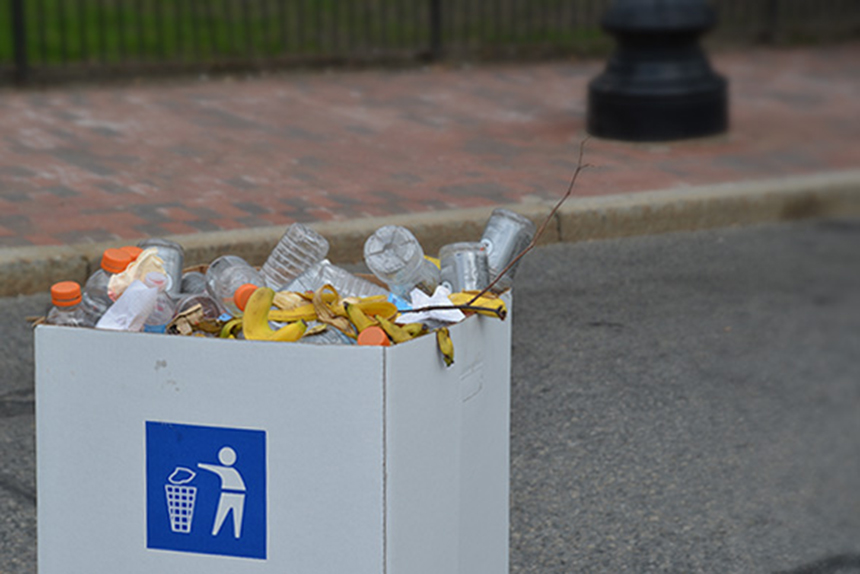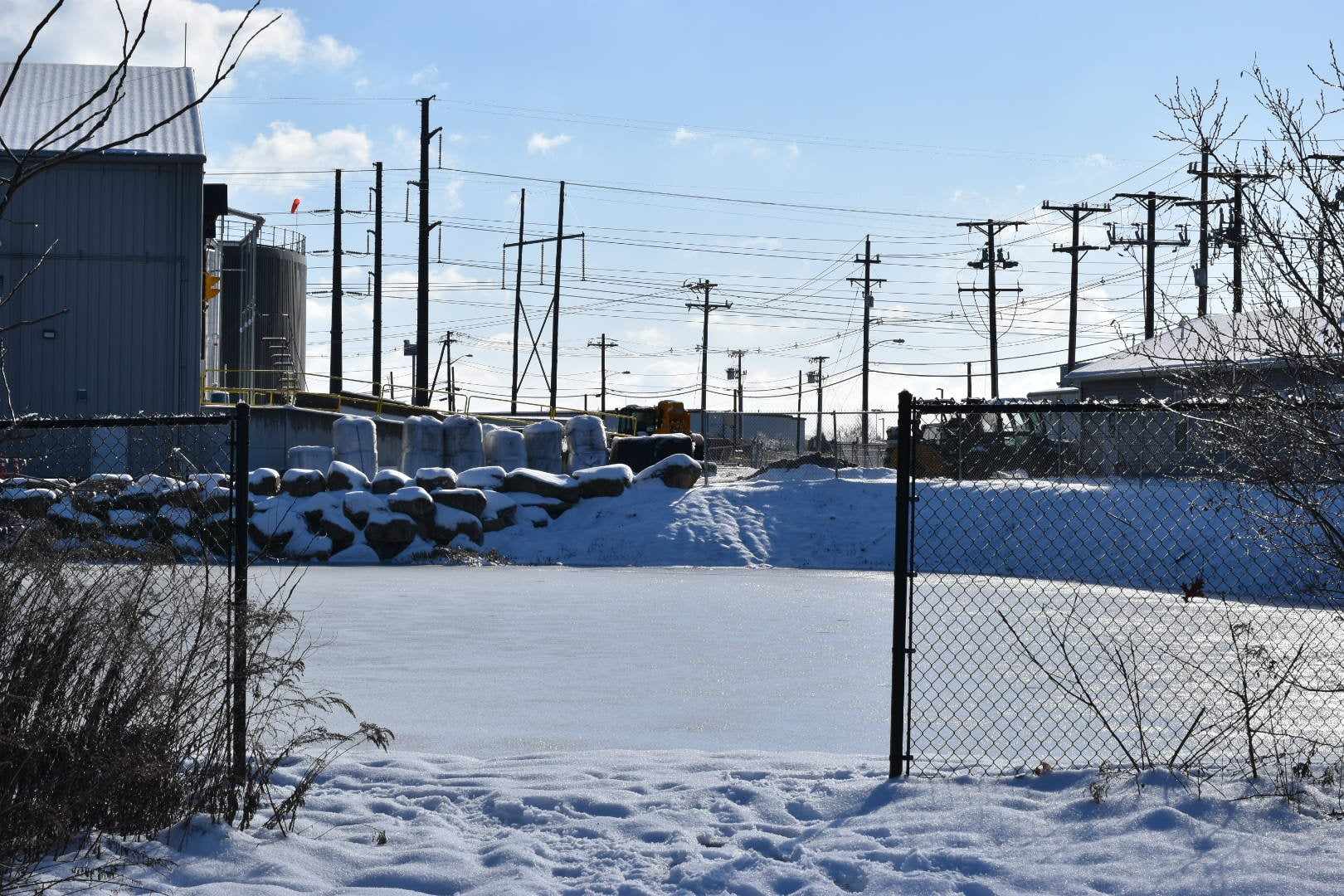In San Francisco, Compost Collection is a Treat
June 23, 2011
SAN FRANCISCO — While Rhode Island continues a sluggish approach to some type of curbside composting initiative, food-waste collection in the City by the Bay is mandatory and has been for nearly two years.
The collection of compost within San Francisco’s city limits, however, has been a common practice since the mid-1990s, thanks to the city’s sustained efforts to promote recycling.
Compost is a mixture of decaying organic matter, such as potato skins, coffee grounds, carrot peelings, apple cores and yard waste, used to improve soil structure and provide nutrients. Unfortunately, most of Rhode Island’s valuable organic material ends up buried in the ever-shrinking Central Landfill in Johnston.
The U.S. Department of Agriculture (USDA) estimates that nearly 26 million tons of food waste annualy ends up rotting in landfills or being burned in incinerators. Food waste that doesn’t end up buried or burned, is often chewed up in garbage disposals, which increases the load on sewage treatment plants, wastes water and keeps even more nutrient-rich food scraps from being used to make dirt.
In fact, less than 2 percent of U.S. food waste is managed through composting, according to the federal agency.
Rhode Island has been grappling with the idea of composting its organic waste for more than three decades. In the meantime, as proponents continue to nurture the political and public will to implement statewide and/or municipal composting programs, the tons of food waste the Ocean State buries annually could be better used to create nutrient-rich soil.
Instead, a valuable resource is squandered.
Buried treasure
“Food scraps are a precious resource we shouldn’t be burying or burning,” said Steven Chiv, the residential zero waste associate for the San Francisco Department of the Environment, which oversees the city’s composting program. “You need to get the maximum usage out of this valuable resource. You need to teach people the value of the food scrap.”
San Francisco collects about 600 tons of commercial and residential food waste daily, up from about 300 tons before the mandatory ordinance — the first of its kind in any U.S. city — went into effect Oct. 21, 2009. The program allows residents and businesses to compost chicken bones, turkey carcasses, cantaloupe skins, used napkins, milk cartons and other food-soiled paper.
To help San Francisco move closer to its goal of zero waste by 2020, the city’s mandatory recycling and composting ordinance requires residents and businesses to separate their refuse into recyclables (blue bin), compostables (green bin) and trash (black bin). All property owners are required to maintain and pay for adequate waste services, and tenants are encouraged to file a report if their property owner or manager fails to provide compost and recycling services.
Owners and/or managers of apartments, condominiums, restaurants, coffee shops and other businesses are required to maintain the appropriate color-coded bins in convenient locations and to educate tenants, employees and contractors on what materials go in each container.
Three years ago — before composting was mandatory — San Francisco diverted 77 percent of the waste it generated from being frittered away in a landfill, according to Chiv. The 2009 figures are expected later this year, and Chiv believes that percentage will be even higher.
“It was a matter of breaking habits,” Chiv said during a recent interview in the San Francisco Department of the Environment’s office, only a few blocks from City Hall. “Getting people to stop instinctively throwing everything down the trash chute.”
To do that, the Department of the Environment had to create policy to implement a composting program and then it had to win the will of government — something Rhode Island proponents of municipal/state composting have failed to do here.
Waste diversion
The task there was made easier by the fact that in 2007 San Francisco was the first major city to enact a ban that forbid restaurants and city departments from using Styrofoam and other brands of the plastic foam called polystyrene. San Francisco also was the first city in the country to ban plastic bags at large supermarkets and pharmacies.
For the mandatory program to be successful, the Department of the Environment also had to make composting as easy as trash collection — a daunting task considering San Francisco, with a population of 805,235, has people living in single-family homes, duplexes, apartment complexes and skyscrapers. Its diverse population speaks Japanese, Chinese, Spanish, Korean and several other languages, and the northern California city with its world-famous Golden Gate Bridge is a popular tourist destination.
Education and outreach, Chiv said, was and still is the key to compliance. “It’s about cultivating the right message,” he said. “You need to get folks off their standard routine and let them see the impact, if not on the environment, at least on their trash bill.”
Financial incentive was the key to convincing the commercial sector, showing businesses that they could save $200 or more on their monthly waste-hauling bills. There’s also the threat of a $1,000 fine for noncompliance.
Despite not fining any business since the mandatory composting requirement was enacted nearly two years ago, Chiv said the business sector, including restaurants, is at a 90 percent compliance rate — better than the 82 percent for the city’s apartment buildings.
Compostable and recyclable materials are banned from the city’s transfer station, enabling trash collectors to enforce the rule by simply not emptying bins and placing a warning tag on the ones that contain incorrect materials.
In fact, the Department of the Environment estimates that three out of four pieces of “garbage” are actually recyclable, which is why San Francisco helps make composting cost-effective by charging trash companies some $120 a ton to get rid of garbage. In Rhode Island, for comparison, the tipping fee sits at $32 a ton for municipal waste.
The 600 or so tons of biodegradable waste collected daily is trucked to composting facilities about 70 miles north of the city, where bones, citrus, meat and other food “waste” is ground into a uniformed size and eventually used to build back our depleted soil.
Categories
Join the Discussion
View CommentsYour support keeps our reporters on the environmental beat.
Reader support is at the core of our nonprofit news model. Together, we can keep the environment in the headlines.
We use cookies to improve your experience and deliver personalized content. View Cookie Settings



